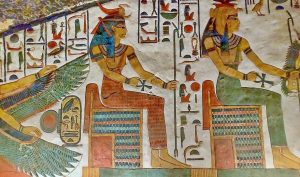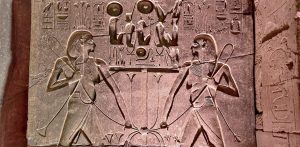Who is Ramses II, the King of Egypt?
Ramesses II (1303–1213 BC) was Egypt’s 19th dynasty’s 3rd king. He is frequently regarded as the greatest, most famous, and most powerful king of the New Kingdom, which was Ancient Egypt’s most powerful period.
King Ramses II, often known as Ramesses The Great, was one of Egypt’s greatest pharaohs. One of his most famous titles is Ozymandias, which is Greek meaning “The Matt of Ra is Powerful, Chosen of Ra,” which means “The Matt of Ra is Powerful, Chosen of Ra.” His legacy began when he was born in 1303 BC to his father Pharaoh Seti I and his mother Queen Tuya as the third monarch of the 19th dynasty (1292-1186 BCE). When he was 14 years old, he was second-in-command during his father’s military operations in Nubia, Libya, and Palestine, and by the age of 22, he was directing his own campaigns with his sons Khaemweser and Amunhirwenemef. Ramses was a legendary emperor who was known for his boundless ambition, wisdom, and foresight.
When did Ramses II become Egypt’s king?

Ramses was a brilliant military leader who protected his empire against various enemies such as Hittites, Libyans, Syrians, and Nubians after his father (King Seti 1st) died in 1279 BCE at the age of 25. His reign lasted for 67 years until 1213 B.C., and he was a brilliant military leader who protected his empire against various enemies such as Hittites, Libyans, Syrians, and Nubians. He led his army, which numbered 100,000 men during his reign, on numerous campaigns to Nubia and the Levant in order to expand his empire and restore the Egyptian empire’s glory by capturing many cities in the Levant, as well as warning the Hittites about their unwise hostile actions toward Egypt, which culminated in the battle of Kadesh in 1274 BC between Ramses II and the Hittites in the city of Kadesh. The fight is regarded as the most well-documented in all of ancient history. In this fight, no one won, but both sides claimed victory, resulting in the first documented peace pact in history.
What Are King Ramses II’s Best Works?

While at war with the Hittites, he built a new city named Per Ramess in the Nile River delta to serve as his residence. Ramses is the second-longest reigning monarch in Egyptian history, lasting 67 years after the 6th dynasty pharaoh Pepi II, who reigned for 90 years. During his reign, he built numerous temples and rebuilt and expanded many of his ancestor’s structures, including the Amenhotep III Temple in Luxor, which houses the hall of columns in Karnak Temple, and many more. He wanted to immortalize his legacy by erecting his own temples; the greatest of which is the Ramesseum temple on the west side of the river, which depicts his journeys to Nubia and tremendous exploits, but it was tragically eaten by time, leaving only little inconsequential relics. He constructed the Abu Simbel Temples, which served as the Egyptian kingdom’s back gate and final frontier from the deep south. The temples contain two temples, the larger of which is dedicated to him and decorated with his battle victories and achievements, and the smaller one is dedicated to his wife Nefertari. During his reign, his name was carved onto every temple, and gigantic sculptures and monuments were erected.
When did Ramses II pass away?
When did Ramses II pass away?
Monarch Ramses II was a strong and powerful king with over 200 women, the most renowned of whom was his adored primary wife Nefertari, and approximately 105 sons and 54 daughters. His mummy was discovered near Hatshepsut’s temple in Luxor in 1213 BCE, and it was transported to the Egyptian Museum and subsequently to the National Museum of Egyptian Civilization in Cairo, just as his magnificent statue, which was moved from Ramses Square to the entrance of the new GEM Museum. Finally, I hope you enjoyed the article and learned everything there is to know about King Ramses II. And if you want to see the finest attractions created by King Ramses II, then check out our Egypt tour packages and Nile river cruises, which are tailored to allow you to have the best trip in Egypt while seeing the best attractions constructed by King Ramses II as well as excursions to Egypt’s marvels.






